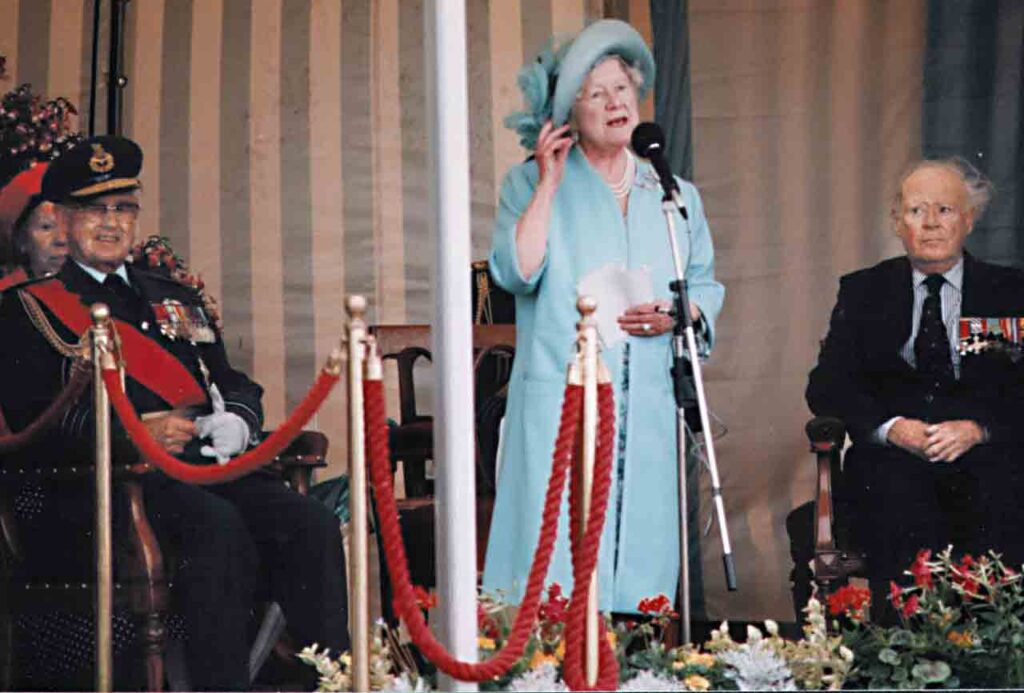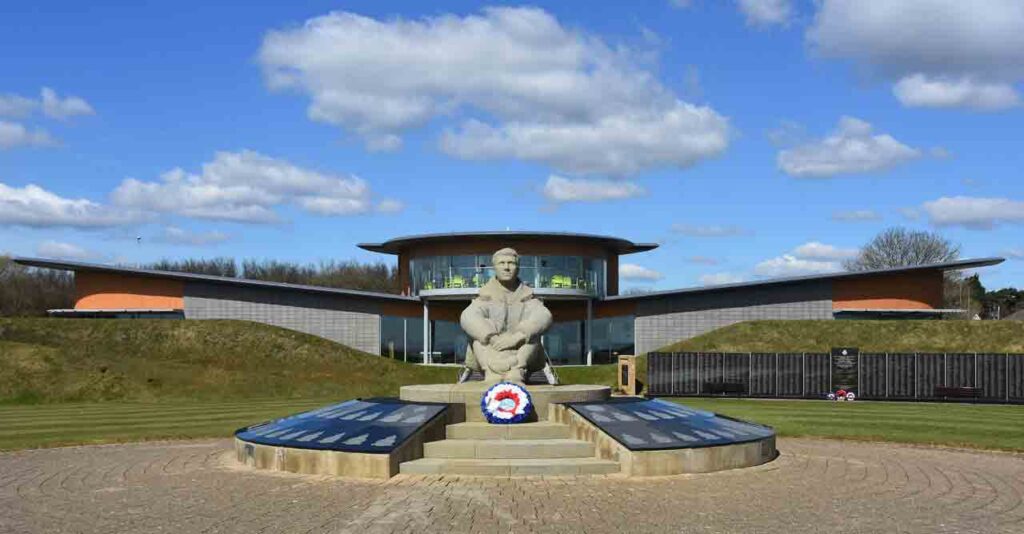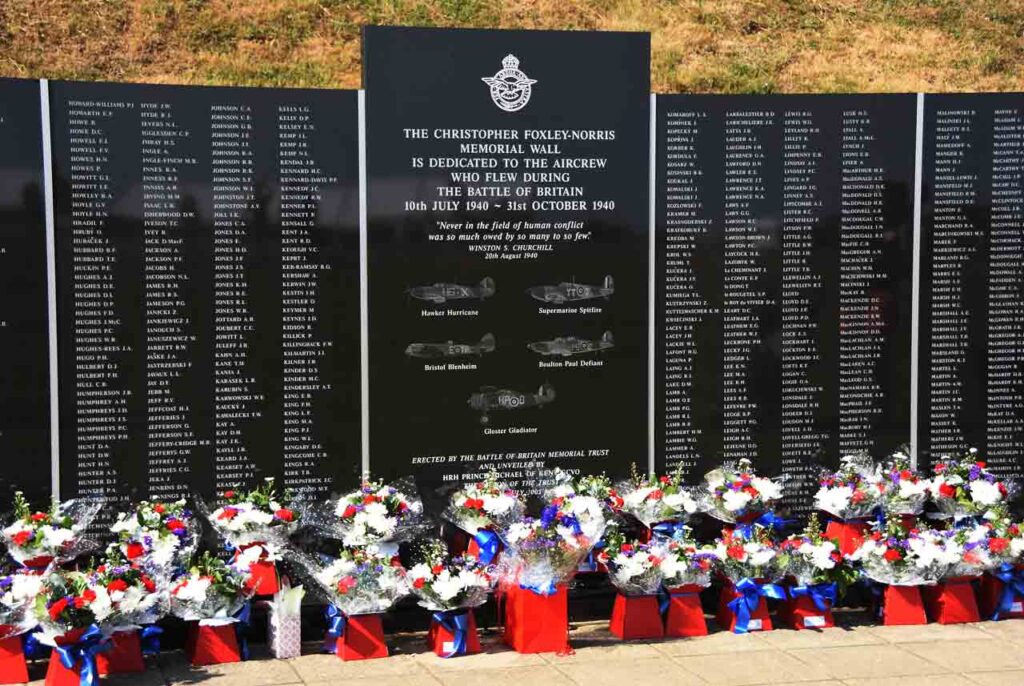Her Majesty Queen Elizabeth The Queen Mother at the opening of the Memorial in 1993
While locals will know that Capel-le-Ferne is renowned for its microclimate, the weather on Sunday 9 July, 1993, was particularly unseasonal.
Amidst strong winds and heavy rain, a Royal helicopter made its way along the coast to a clifftop site where a stone carving of a Royal Air Force airman gazing out across the Channel was waiting to be unveiled. The sculpture sat in the centre of a large, three-bladed white chalk propeller.
“My boys never turned back. We press on!”
With the weather growing worse, the pilot is said to have turned to his Royal passenger with the words: “The weather is getting worse, Your Majesty. Should we turn back?” Her Majesty Queen Elizabeth The Queen Mother is said to have replied: “My boys never turned back. We press on!”

Her Majesty Queen Elizabeth The Queen Mother opens the Memorial
Apocryphal or not, the story illustrates both her Majesty’s indomitable spirit and that of the airman commemorated by the Memorial she was to unveil that day. The National Memorial to the Few, now well established at its clifftop home just outside Folkestone, pays tribute to the fewer than-3,000 aircrew who flew in the Battle of Britain in 1940.
It was the brainchild of Wing Commander Geoffrey Page, DSO, OBE, DFC and bar, who, as a Pilot Officer during the Battle, was shot down in flames and badly burned, becoming one of renowned surgeon Sir Archibald McIndoe’s ‘guinea pigs’ at the Queen Victoria Hospital in East Grinstead.

The impressive Battle of Britain Memorial
Group Captain Patrick Tootal
Years later Page realised there was no tribute to the men with whom he had served and persuaded a group of like-minded people to set up the Battle of Britain Memorial Trust with a view to putting that right. Group Captain Patrick Tootal, still the Trust’s driving force and its honorary secretary, joined the team in 1997.
After persuading Dover District Council to provide the site at a peppercorn rent and raising the necessary funds, the Trust commissioned the National Memorial, an enigmatic carving by sculptor Harry Gray.
Over the years the Memorial has been enhanced by other features, including a replica of the Hurricane in which Page was shot down and another of a Spitfire, the other iconic fighter that helped the RAF fight off the Luftwaffe to keep this country free from invasion.
It is to remember the wireless operators and air gunners who flew in other, multi-crewed aircraft that the Trust refers to ‘aircrew’, rather than pilots. The desire to honour all those who took part is also why the airman’s rank and nationality are hidden by his jacket and why the Christopher Foxley-Norris Memorial Wall, which lists the names of those known to have qualified as one of ‘the Few’, shows neither rank nor decorations.

The Memorial Wall
The popular site, which is free to visit (there is a small car parking charge) has grown over the years, but the Memorial unveiled by ‘the Queen Mum’ remains at its heart. The most recent major addition was The Wing, a modern visitor centre which includes the exciting, multi-media Scramble Experience alongside a shop and café.
The Wing was opened in 2015 by Her Majesty Queen Elizabeth II and His Royal Highness Prince Philip, Duke of Edinburgh – in weather that was nearly as bad as her mother had experienced.
For more information on East Kent’s own national Memorial, see www.battleofbritainmemorial.org
